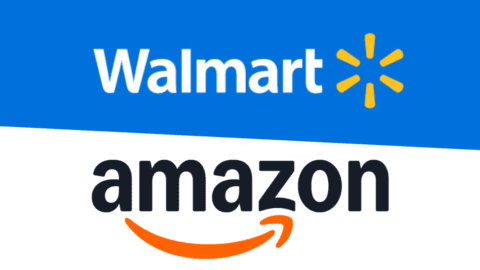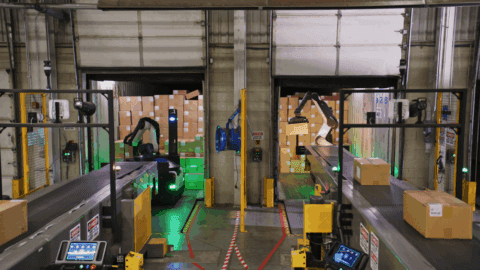Since its inception in 2008, SHEIN has become one of the retail industry’s most remarkable growth stories, but it also has been routinely accused of committing some of the retail and apparel industries’ worst offenses — including having an outsize carbon footprint and allegedly condoning (or at least turning a blind eye) to the use of forced labor in making the products it sells.
Despite the controversies, the fast-fashion brand has been named one of Gen Z’s favorite brands and one of the fashion industry’s most popular brands. SHEIN’s incredible reach, amplified through influencers, and its focus on creating on-trend items at an extremely rapid pace can be thanked for that.
However, earlier this month, U.S. lawmakers penned a letter to the chair of the Securities and Exchange Commission urging investigation following claims of Uyghur forced labor. And while the fashion industry as a whole annually emits greenhouse gases comparable to the combined economies of France, Germany, and the UK, SHEIN has been named one of the worst perpetrators.
As its reach and impact in the fashion industry continues to grow, SHEIN is focused on righting the brand ship and zeroing in on its manufacturing and product development processes. Most notably, the brand has implemented firmer ESG goals, committing to reducing absolute greenhouse gas (GHG) emissions across its entire value chain 25% by 2030.
Peter Pernot-Day, Global Head of Strategy and Corporate Affairs at SHEIN, is playing a critical role in this journey, acting as a connecting point between CEO Chris Xu and the rest of the business, and ensuring that Xu’s “big ideas” are translated into tactical goals and measures implemented across the business.
As SHEIN tackles these priorities to meet its documented goals, Pernot-Day noted in an interview with Retail TouchPoints that alignment and buy-in across the organization is driving success. “We’re very focused on identifying what you would call traditional ESG approaches and business objectives and reframing them to be business drivers and business entities,” he explained. “How do you do that well, see success and solve business challenges? We have some interesting views on how that [alignment] works and have seen some of that start to play out.”
To reach its GHG reduction goal, for example, the company is “embedding science-based targets into decarbonization efforts” to “set impactful and realistic goals that align with a global climate agenda and hold ourselves accountable for sustainability commitments,” according to a statement. By collaborating with Intertek, a Total Quality Assurance provider, the fashion brand is aiming to quantify and monitor environmental impacts within its own operations and across the entire value chain.
But there are several initiatives that connect to this broader mission and help reaffirm the brand’s emphasis on innovation — something that Pernot-Day is attempting to spotlight. “Everyone at the company wants to have that innovative spirit,” he said. “They are really committed to solving problems. We have heard terms like ‘greenwashing,’ and while that is a major problem [in the industry], we are focused on what we can actually accomplish. Yes, we are accused of being a massive polluter. But when you look at what we’re actually doing, our carbon footprint is quite low and our waste is very low.”
In this exclusive interview with Retail TouchPoints, Pernot-Day dug into the three competitive areas that SHEIN is investing heavily in moving forward: Small-batch, on-demand product development; circularity and textile innovation; and localization.
Priority 1: Small-Batch, On-Demand Product Development
Between July and December of 2021, SHEIN added between 2,000 and 10,000 individual styles to its app each day, according to an investigation by Rest of World. This rapid product development cycle helps the brand monetize what’s trending — and in the always-on social media climate, there is always something new trending. Getting products to market faster also incentivizes shoppers to continuously visit the ecommerce site or mobile app, essentially gamifying product consumption.
This rapid cycle is powered by a small-batch, on-demand product development process. For each new product sold on the SHEIN website, only 100 to 200 units are produced. The brand then uses data and algorithms to gauge real-time customer interest and feedback, which is then relayed to supplier partners via its proprietary supplier management system. Third-party suppliers then access these demand metrics through the system and let the brand know whether they have the capacity to fulfill that demand for production.
Production for specific SKUs is accelerated, reduced or paused based on market demand. Pernot-Day shared that SHEIN only increases production when warranted, which helps the brand reduce its unsold inventory percentage to single digits, versus the industry average of 25% to 40%.
“We take best-in-class audience measurement and demand assessment, and marry that to cutting-edge proprietary supply,” Pernot-Day said. “If people are interested in a product and we measure demand, we can go back to our suppliers and find one who can actually meet that demand. The cost savings are enormous, and it allows us to operate a massive range of products at any given time.”
A small-batch, on-demand approach also means SHEIN can avoid traditional product development and merchandising limitations, such as seasonality, and embrace limited collections that drive customer interest and relevance. “We may do a capsule collection or partnership, but it’s customer-led — and that leads us to monetization,” he explained.
The brand is using its SHEIN X Incubator Program to fill its product development funnel with emerging designers. Now touting nearly 3,000 designers and artists worldwide, the program has sparked more than 25,000 original creations. SHEIN has invested more than $55 million in the program and guides participants through product development, manufacturing, marketing and supply chain logistics.
Priority 2: Circularity and Textile Innovation
Like many brands and retailers, SHEIN also is investing in a circular commerce strategy, largely driven by a new resale experience. The larger goal is to make SHEIN a “fully circular textile economy” by 2050, according to the company.
“Our on-demand model has brought our waste down, but the questions then become: What do you do with the product post-consumption? How do you encourage circular cycling of garments to extend longevity?” Pernot-Day said.
Several projects are in motion, including SHEIN Exchange, a peer-to-peer resale platform that allows customers to sell their “pre-loved” SHEIN items. The company conducted a consumer survey and found that two-thirds of respondents already passed their SHEIN items to friends and family when they were done with them, so this program allows the brand to systematize and monetize these behaviors.
SHEIN also is investing in using more recycled and regenerative materials for its products. For example, its evoluSHEIN line is a purpose-driven collection with inclusive sizing that’s crafted using responsibly sourced materials. Launched in 2022, the line was developed in collaboration with Vital Voices, an international nonprofit that supports emerging women leaders in light of gender-based violence, the climate crisis and economic inequities. EvoluSHEIN’s first product cycle featured recycled polyester, which is a fiber obtained from plastic waste. SHEIN has previously been disparaged for its use of virgin polyester, which accounts for one-fifth of the plastic’s production globally and emits triple the amount of greenhouse gases compared to cotton production.
The company also recently announced its partnership with Queen of Raw, a circular economy technology company that will use science-backed software to help SHEIN responsibly source excess fabric inventory from other brands and retailers to support more ethical product creation. The Materia MX platform will help SHEIN maintain its sourcing requirements and also better track and report the impact of these circular efforts.
Pernot-Day shared that SHEIN is now especially passionate about next-generation materials and fabric technology, although he admitted that this is still very much a forward-looking initiative. “It’s a fascinating space because it allows you to use mushroom fiber to create these next-generation textiles, and how to make artificial leathers,” he said. The brand also is committing to source only forest-safe man-made cellulosic fibers and paper packaging products by 2025, in partnership with Canopy’s CanopyStyle initiative.
Priority 3: Localization
Order fulfillment and transportation management play a big role in the sustainability conversation, and SHEIN shared that it would spend $7.6 billion on a partnership with Apparel Impact Institute, a nonprofit that works with manufacturers to set and implement energy efficiency programs.
Now the brand is focused on localization. While SHEIN is a global company, it is expanding its factory network and has started onshoring and nearshoring operations. For example, the company opened a distribution center in Whitestown, Ind., which can not only significantly improve local employment numbers but also minimize the carbon emissions generated in getting products to customers’ doorsteps.















